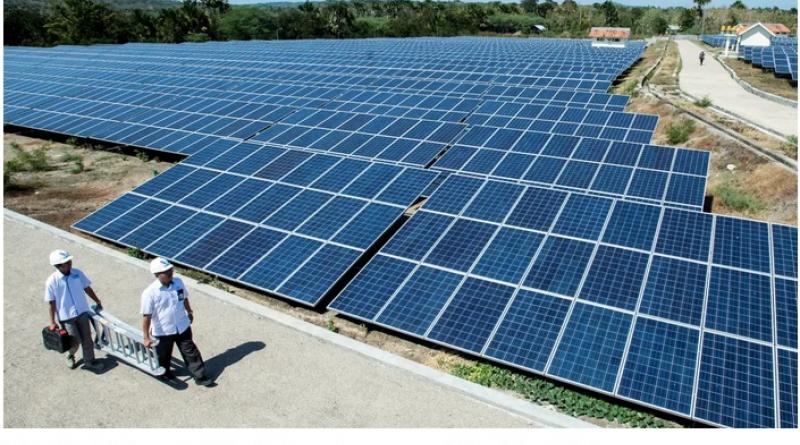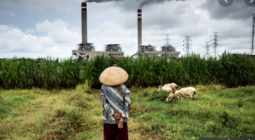Solar gets a boost in Indonesia's new $35bn renewable power plan

State utility PLN aims to phase out coal from 2028 over several decades
JAKARTA -- Indonesia has announced a new electricity procurement plan that includes up to 500 trillion rupiah ($35 billion) for development of renewable energy-based power plants in the coming decade as Southeast Asia's largest economy aims to cut its dependence on coal.
State utility Perusahaan Listrik Negara, which holds a monopoly over the country's power sector, on Tuesday called its latest procurement plan -- the RUPTL 2021-30 -- its "greenest" to date. Renewables will dominate construction of new power plants to be built nationwide through 2030 -- accounting for 51.6% of the total 40.6 gigawatts of planned additional capacity.
That marks a substantial increase from 29.6% in the previous 10-year plan released in 2019. PLN has usually updated the RUPTL annually, but last year was one of a few exceptions with the coronavirus pandemic disrupting economic growth forecasts and projections for electricity demand in the country.
"The lengthy process was also affected by global trends including stronger demand from countries and big or international consumers for green products, termination of financing for fossil fuel-based power plants by sponsor institutions or countries, as well as costs of renewables ... that continue to decline and are becoming more competitive," Rida Mulyana, director general for electricity at Indonesia's energy ministry, told a webinar describing the latest RUPTL.
Taking into account slowing growth in the aftermath of the pandemic and previous forecasts that were too ambitious, PLN's plans to build 40.6 GW-worth of new power plants over the next decade is lower than the previous 56.4 GW target for 2019-28. The company, fully owned by the government, now estimates 4.9% electricity demand growth annually, from 6.4% in the previous estimate.
A total of 20.9 GW of new power plants from renewable sources will be built through 2030, from the previously planned 16.7 GW through 2028. Hydropower still leads, accounting for around half of the total, but solar is seeing the highest increase -- more than tripling to 4.7 GW, followed by geothermal at 3.35 GW.
There will still be a total of 13.8 GW of additional capacity from new coal-fired power plants through 2027 from ongoing projects or existing contracts from the government's previous 35 GW power procurement program.
But "there will be no more new thermal power plants in 2028" and beyond, said Evy Haryadi, PLN director for corporate planning.
He added that an estimated 820 trillion rupiah is needed to finance the latest 10-year procurement, including for the renewables-based power plants. PLN wants about 60% of the total to come from independent power producers.
Despite the increase in planned capacity for renewables, projections of oversupply from the 35 GW program and overall slowing electricity demand mean their portion will only grow slightly to 29% of PLN's total installed capacity of 99.2 GW by 2030 -- from the target of 23% by 2025 and 13% last year. Coal will still dominate with 45% of the 2030 total, from 50% in 2020.
Haryadi said the latest plans are part of PLN's mission to support the government's zero carbon pledge by 2060, with the coal-dominated power sector being one of the largest contributors to Indonesia's carbon emissions.
Beyond 2030, he said the company is seeking gradual early retirements of coal-fired power plants. PLN is also "exploring a partnership" with an international financial institution to tap a carbon reduction fund to financially support those early retirements.
PLN President Director Zulkaifli Zaini added that over the long term, PLN is also seeking to tap new technologies including carbon capture, utilization and storage, as well as hydrogen, nuclear and tidal power. It will also promote expanding use of induction stoves, electricity vehicles and rooftop solar development across Indonesia.
In addition to the latest RUPTL, the energy ministry recently said it has finalized a draft for a new presidential regulation on electricity tariffs from renewables that is expected to make their pricing more competitive to coal -- which is cheap and abundant in Indonesia.
Daniel Kurniawan, solar analyst at the Institute for Essential Services Reform, an Indonesian energy think tank, said the significant increase in the solar portion should proceed well "given the improving economics" of solar energy. Whether or not PLN will be able to draw enough private investment, however, "will depend largely" on the bidding process for both its engineering contractors and independent power producers, he added.
BloombergNEF, a research arm of Bloomberg, and IESR said in a joint report last month that PLN's current power procurement process is "opaque, limiting competition and price discovery" -- which has hindered investment in the renewable energy sector and also "increases costs to the public purse."





